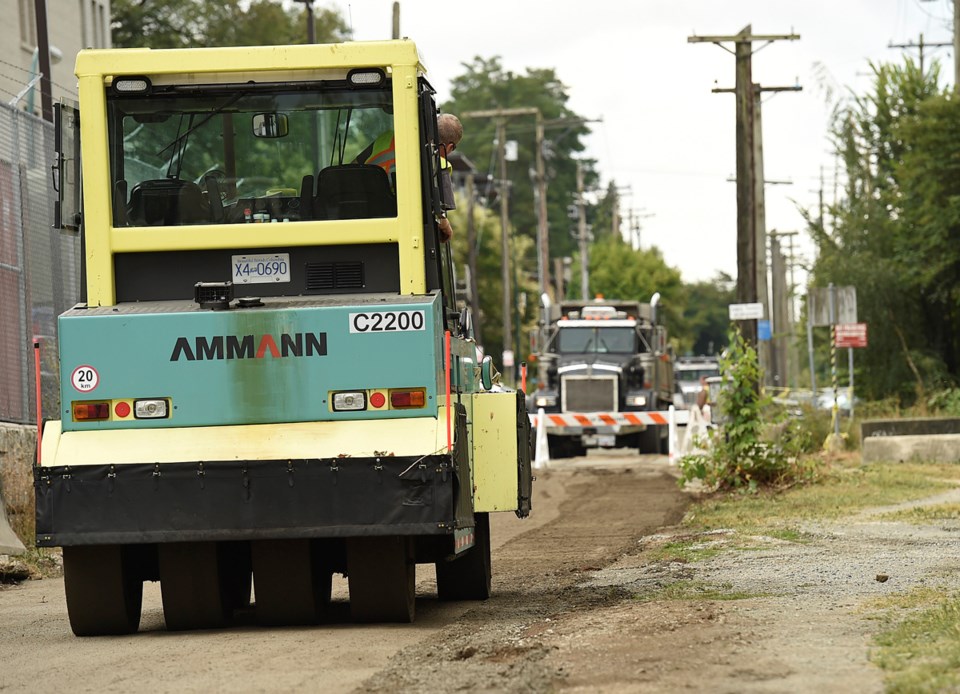On our usual Sunday morning distance run in late July, a small group of us plotted a route that would cut across from the East Side through the leafy Shaughnessy neighbourhood, then back. Just about at the halfway mark we arrived at Arbutus Street and spotted the newly paved pathway along the old railway corridor.
We were all tickled by the thought we were among the first local runners to test out the former rail right-of-way, so we snapped a selfie with someone’s smartphone before jogging the route.
Right then I was convinced (and remain so) that City of Vancouver staff had made a smart decision to hasten access to the Arbutus Greenway for all pedestrians, cyclists and wheelchair users, even with a planned public consultation on the pathway barely underway.
That this was not a universally held opinion did not come as a shock to me. This is Vancouver, after all, where polarized debates on bike lanes are even more common than kvetching about the Canucks.
The arguments of the anti-paving advocates are a patchwork. They include safety concerns, environmental protection, cost and even accessibility for blackberry pickers. There is no rush, some say, let’s plan this route right. Others strongly believe that gravel is a suitable surface for walkers and those on wheels.
Another recurring theme is that Mayor Gregor Robertson and his Vision council do not care to listen to the public, and it is time to take a stand for “more consultation.”
I think I have read them all, yet remain unconvinced by the opposition. If you have ever walked or cycled our coveted seawall, you know pavement is a safe and efficient way to provide access to the outdoors. Furthermore, you can recycle asphalt if another surface is chosen later.
Nonetheless, in an attempt to defuse an escalating conflict, city engineer Jerry Dobrovolny pushed the pause button on paving the Arbutus Greenway so more people could be heard on the matter. This decision, in turn, frustrated active transportation supporters, who have become accustomed to getting what they want from Robertson’s administration.
Welcome to pavement politics, Vancouver style.
To understand what the city is trying to accomplish, it could be useful to go back a quarter century. In 1991, then Mayor Gordon Campbell and his council launched an independent Urban Landscape Task Force made up of planning professionals and community advocates.
The Task Group’s final report — titled Greenways-Public Ways (1992) — followed another visionary city strategic plan dubbed Clouds of Change (1990), which took aim at reducing air pollution emissions. It was in the “Greenways” report that the idea of an Arbutus right-of-way that “includes bicycle and pedestrian paths” was forged.
A while back I received a bound copy of the report as a keepsake — along with the Vancouver Greenways Plan (1995) — from retired city planner Sandra James, who was, and is, the city’s most energetic proponent of walkability.
On page 46 of the greenways report, a section titled “Vancouver Vision: Year 2010” immediately jumps out at me. I had to smirk at the “Vision” title given its modern political connotation, and the fact that at least two of the Greenways’ committee members would serve on the board of the Non-Partisan Association some years later.
In many ways, the report’s “Year 2010” sounds a lot like Vancouver today, with improved walking and cycling routes, reduced car trips in the downtown core thanks to better alternatives, and a network of greenways across the city.
This is something I think a lot of us are quite proud of, notwithstanding the complaints about bike lanes and lack of consultation. For nearly a generation, the City of Vancouver has been striving to become more livable and green.
With so many new hires in the city’s senior management hailing from the United States, the documents I mentioned — along with the formative 1929 Bartholomew Plan — would make for fitting summer reading. It would surely give them a head start when it comes to understanding where we live.
In the fullness of time it is possible that securing the Arbutus corridor for public use may be what people remember about Mayor Robertson’s time in office.
But legacies are for another day, and Vancouver’s pedestrians, cyclists, runners, scooter and wheelchair riders deserve access to the greenway now.
@MikeKlassen



